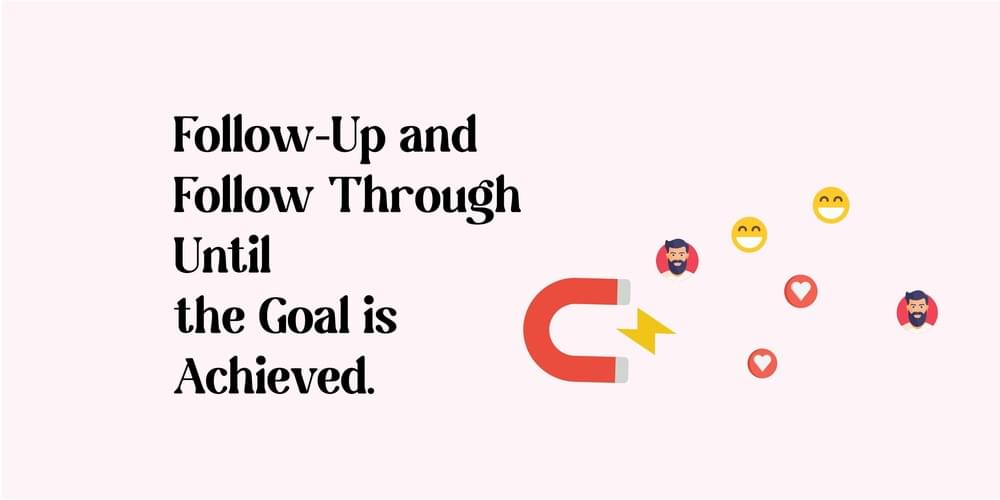
Avoid These Mistakes to Reduce Your SaaS Customer Churn

SaaS companies undergo a dynamic change. Despite having built the best products, they still may face unprecedented challenges with uncertain issues. Every entrepreneur in a SaaS business has to face specific challenges that could lead to either making mistakes or making the best business decisions.
This disruptive technology is excellent when smart metrics provide valuable information that helps you make the best business decisions.
Why is churn important in SaaS?
SaaS customer churn is essential in any subscription-based business because, unlike other industries, SaaS companies must continuously acquire new customers to offset each month’s natural churn.
If a SaaS company isn’t growing its customer base, it’s not just losing revenue from those who cancel their subscriptions; it’s also missing out on the opportunity to generate even more revenue from upsells and cross-sells.
In other words, SaaS customer churn isn’t just a numbers game; it’s also a growth game. And that’s why so many SaaS companies focus on reducing their churn rates.
There are several ways to reduce SaaS customer churn in a SaaS business, but some of the most effective include:
• Offering discounts or free trials: This can effectively entice customers who are on the fence about your product.
• Improving customer onboarding: Ensuring your customers understand how to use and get value from your product is critical.
• Focusing on average SaaS retention rate: Once customers have been with you for a while, they’re less likely to churn. So it’s essential to focus on retaining your existing customers and acquiring new ones.
Why is it essential for a company to know its SaaS churn rate?
Churn is a massive problem for companies, especially in the software-as-a-service (SaaS) industry. It’s been estimated that the average SaaS company loses about 20% of its customers yearly. That’s a lot of customers! And it’s a lot of money that these companies are losing. So why is churn so significant? And why is it so crucial for companies to know their churn rate? There are a few reasons:
1. Churn affects your revenue. If you’re losing customers, you’re also losing out on revenue. But beyond that, churn can significantly impact your future income. That’s because when someone cancels their subscription or stops using your service, they’re not just gone forever–they’re also likely never to come back.
2. Churn hurts your growth. To grow, companies must acquire new customers and keep them around long enough to become profitable. But if you have a high churn rate, you’ll constantly be acquiring new customers just to offset the ones leaving- making it very difficult to grow sustainably.
3. Churn gives you insights into your business. Churn in SaaS subscriptions soon after signing up, it could be because they’re not happy with what they’re getting—which means you need to make some changes. Conversely, if people stick around for a while before canceling, it could mean they’re pretty satisfied with what you’re offering. Either way, understanding your churn can give you some valuable insights into how your business is doing.
What is a good churn for SaaS?
There is no one-size-fits-all answer to this question. Every business is different, and what works for one company might not work for another.
You can follow some general guidelines when trying to determine what level of churn is acceptable for your business.
First, it’s essential to understand that customer churn is inevitable. No matter how good your product or service is, you will always have some customers who decide to leave. This isn’t necessarily bad; it’s often a sign that your business is healthy and growing.
What you should be concerned about is excessive churn—when the number of customers leaving your company exceeds the number of new customers coming in. This can be a problem because it means you’re losing more revenue than you’re bringing in, which can quickly lead to financial trouble.
So how do you know if your SaaS churn rate is too high? There’s no hard and fast rule, but generally speaking, a churn rate of 5-7% per month is considered acceptable for most SaaS businesses. Anything above that should be cause for concern.
Of course, these numbers will vary depending on your specific industry. For example, companies in highly competitive industries tend to have higher churn rates than those in less competitive markets. Additionally, businesses with longer sales cycles (i.e., those that take longer to convert prospects into paying customers) will usually have higher churn rates than those with shorter sales cycles.

What Can Companies Learn From SaaS Customer Churn—The Mistakes They Need To Avoid.
1. Not understanding what causes SaaS customer churn.
Various factors cause SaaS customer churn, but poor customer service, high prices, and buggy products are the most common. To reduce churn, you need first to understand what’s causing it. Only then can you take steps to address the issue.
Churnfree tool offers a one-platform solution to calculating the correct churn rate, giving you complete transparency on all significant reasons for churned customers.
2. Not tracking churn.
You can’t improve something if you don’t measure it. That’s why it’s essential to track your churn rate. There are a few different ways to do this, but one of the most common is calculating your SaaS customer churn rate. SaaS churn rate is the percentage of customers who cancel their subscription or stop using your product within a certain period.
Knowing the right churn rate for your products will make it easier for you to discover why your customers decided to leave. Transparency into all matters that can help you retain customers is essential—Churnfree offers fast solutions and real-time transparency to retain all your unhappy customers.

3. Not segment your customers.
Not all customers are created equal. Some are more valuable than others, and some are more likely to churn. That’s why it’s essential to segment your customers. This way, you can focus your average SaaS retention rate efforts on those most likely to stick around (and generate the most revenue).
In this fast world, help from excellent tools transforms the ways of doing business.
Churnfree tool helps you figure out why your customers decided to churn. Try applying different strategies for different types of churned customers.
4. Not offering enough value.
Ensure you’re offering a product or service that solves a real problem for your target market. This could be in the form of discounts, exclusive content, or early access to new features. If your customers don’t see the value in your offering, they will not stick around for long.
Another way to combat SaaS customer churn is by staying in touch with your customers and getting feedback from them regularly. This way, you can stay on top of their needs and wants and address any concerns they may have before they lead to churn.
5. Not providing enough support.
If your customers encounter problems, they will need someone to help them solve them. That’s why it’s essential to provide excellent customer support. Be responsive to customer inquiries, and make sure you have a team in place that can help them with whatever issue they’re facing.
The first step in preventing SaaS customer churn is to understand the reasons why customers leave in the first place. There are many possible reasons, but some of the most common include:
The product isn’t meeting their needs: This is often the most common reason for SaaS customer churn. If your product doesn’t solve a customer’s problem or meet their needs, they will likely look for another solution. Make sure you really understand your target market and what they need from your product.
They’re not using the product: It’s not enough for customers to buy your product; they need to use it as well. If they’re not using it, they’re not getting value from it and are more likely to cancel their subscription. Make sure you have onboarding processes to help new users start your product and continue using it over time.
They don’t know how to use the product: Even if your product does meet their needs, they won’t get any value from it if they don’t know how to use it properly. Make sure you have good documentation and training materials available so users can learn how to use your product effectively.
Price increases: If you increase prices too much or too often, customers may decide that your product is no longer worth the investment and look for a cheaper alternative.
6. Not being transparent about pricing.
Hidden fees and unexpected price hikes are a surefire way to anger your customers and cause them to churn in SaaS business. Be upfront and transparent about your pricing, so your customers know what to expect.
As a business owner, it’s essential to be transparent about pricing. After all, your customers are the ones who will ultimately decide whether or not to purchase your product or service. However, being too transparent about pricing can also lead to SaaS customer churn.
When it comes to pricing, there is a delicate balance that must be struck. On the one hand, you don’t want to be so expensive that potential customers are turned away. On the other hand, you don’t want to be so cheap that people think your product or service is inferior. Instead, you need to find a happy medium where your prices are fair and reasonable.
Of course, SaaS customer churn is always possible, even if you have priced your products or services correctly. A customer cancels their subscription or stops using your product or service altogether. There are many reasons why this might happen, but often it boils down to simple economics. If customers feel like they’re paying too much for what they’re getting, they’ll likely look for a cheaper alternative.
There are several ways to combat SaaS customer churn, but one of the most effective is simply being more transparent about pricing from the start. By clearly communicating your prices and what customers can expect to receive for their money, you can help reduce the chances of them canceling their subscription later on down the line.
7. Not making it easy to cancel.
If you make it difficult for customers to cancel their subscriptions, they’re more likely to get frustrated and leave anyway. Make it easy for them to cancel if they need to, and ensure they understand there are no hard feelings if they decide to go elsewhere.
8. Not following up after cancellation.
Just because a customer has canceled doesn’t mean you should give up on them entirely. Follow up with them after they cancel and try to understand why they made that decision. You may be able to win them back with a special offer or by addressing their concerns.
When customers cancel their subscription, they must reach out and find out why. Was it something about your product? Your pricing? Your support? Or was it something else entirely?
Once you know the reason for the cancellation, you can take steps to prevent other customers from canceling for the same reasons. But if you don’t take follow-up after cancellations, you’ll never know what the problem was in the first place. You might need to change your product, pricing, or support to keep them happy.
So if you’re serious about reducing SaaS customer churn, follow up after cancellations. It could be the key to keeping your customers happy and reducing churn in the long run.

9. Not staying in touch with former customers.
Even if a customer doesn’t renew their subscription, they may still be interested in what you have to offer. You never know when they may decide to come back! Stay in touch with them through email or social media, and let them know about new products or features that could be of interest to them.
Even if a customer doesn’t renew their subscription, they may still be interested in what you have to offer. You never know when they may decide to come back! Stay in touch with them through email or social media, and let them know about new products or features that could be of interest to them.
There are a few ways to stay in touch with your customers. You can send them emails, or connect with them on social media.
Email is a great way to stay in touch with your customers because it’s relatively low cost, and you can reach many people at once. You can also segment your email list so that you’re only sending relevant information to those who are interested in it.
Calls are another great way to stay in touch with your customers. They’re personal and allow you to build a rapport with the person on the other end. However, they can be time-consuming, so make sure you’re only calling those who are interested in hearing from you.
Social media is another excellent way to stay in touch with your customers. It’s quick, and easy, and most people already use it daily. Plus, it allows you to connect with potential new customers who might not be aware of your business otherwise.
10. Not learning from your mistakes.
Churn is inevitable, but that doesn’t mean you should just accept it as part of doing business. Take the time to learn from your mistakes and figure out what you can do differently next time. By constantly improving, you can reduce your churn rate and keep more of your hard-earned customers!
The Bottom-line:
SaaS businesses need to be proactive to keep their customers happy and engaged. After all, acquiring a new customer costs more than retaining an existing one.

